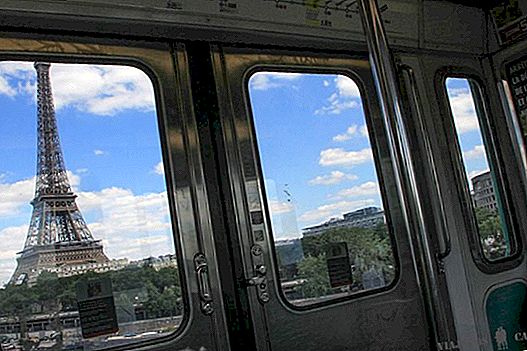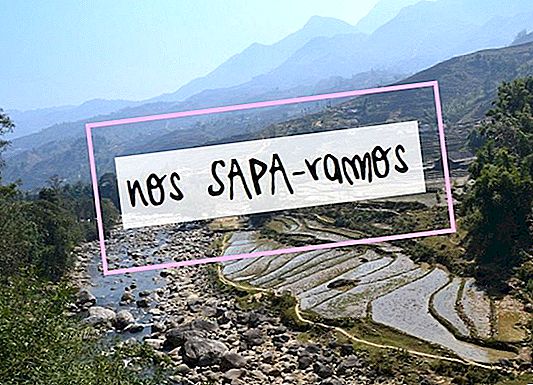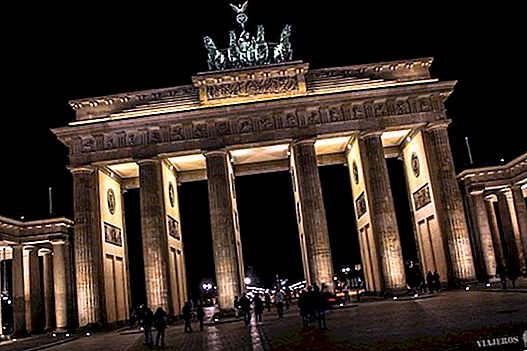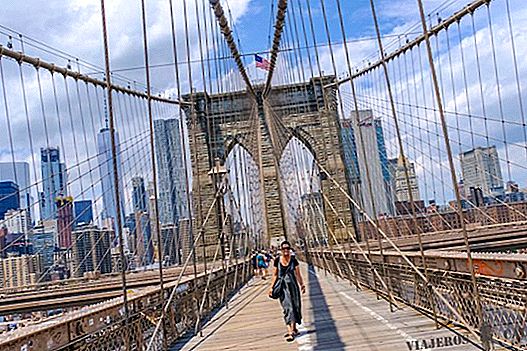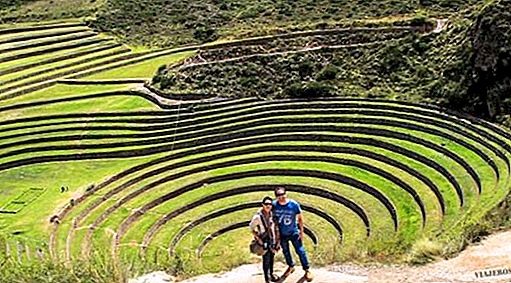Are you going to travel to the capital of Greece and do not know where to start seeing and doing everything it offers to the visitor? Do not worry, we have healed a 4-day Athens travel itinerary perfect to know the city in tranquility (if you have less time combine several days in one).
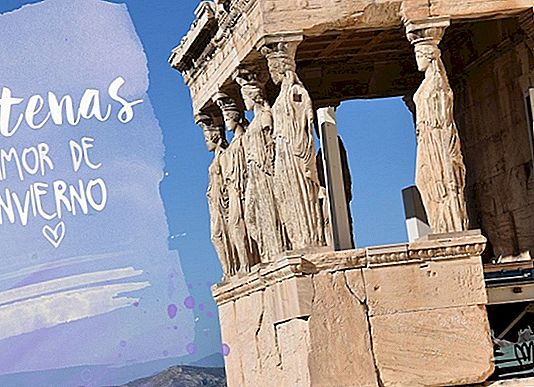
Summer loves are usually characterized by looking perfect, they live with a special passion, they are sometimes uncontrolled, a little wild, fiery, and with a touch of vehemence. They usually end prematurely and have a bad time, although as time goes by they forget and die forever.
In Athens we suffered a crush, we had an adventure with this wonderful city that lasted 4 days (shhhh, that Rome does not find out). 4 days of winter, but a sunny, mild, positive and cheerful winter. Because it's how we feel and how we find Athens, our winter love. This also ended early but we hope that we do not forget and want to return again and again.

How many times we will have said the phrase "we really wanted to go to such a place", the truth is that we really want to go to many places that we still do not know: Morocco, New York, Havana, Buenos Aires, Manchester (nooooooo, Manchester do not!). Greece was one of them, really good. And here we introduce ourselves to know a pinch of it and what better place than its capital, Athens.
Athens, what a name! What memories! The Caryatids, the Parthenon, the Greek theater, the impossible battles, the Odyssey and the Iliad ... I have to thank my teacher of classical culture Alberto for putting so much heart in his classes and having transmitted, although in Pildoritas, some of his passion and culture. Many years have passed since then, but finding myself under the Acropolis, the one I studied with the homemade slides made by the same teacher, never ceases to thrill me.
Legend about the name of Athens: They say that in ancient times there was a dispute between Athena and Poseidon for knowing which of the two gods would be in charge of protecting the prosperous city, orphaned by name. Each one of them had to offer a gift to the people: Poseidon struck the ground with his trident and a spring sprouted from the rock, but this one was salt water and was not used for drinking. It was Athena's turn, which touched the earth with his spear and an olive tree was born, from which people would take advantage of wood, oil and food. The choice was simple and Athena became the goddess of the city to which she donated her name.
But we go in parts ... so that everything is more orderly, let's tell what we did in each of the 4 days we spent here:
How we stayed at the bark of the monastiraki square, this day we used to walk through our neighborhood (Plaka) and we discovered that we couldn't be in a better place! Both day and night is a tremendously lively area. Monastiraki means "little monastery" and refers to the Byzantine church that is in the middle of the square, although it may be more interesting Ottoman mosque of Tzistarakis, built in 1759 using stones from the neighboring Adriano Library and one of the few Muslim buildings that are preserved in the city. But if this place is surprising at first, it is because of the “sacred rock” that rises behind it, the ubiquitous Acropolis, with its impressive ruins.

The surroundings of Monastiraki Square are full of restaurants, souvenir shops, shops, small Orthodox churches, alleyways with beautiful cafes and small squares, urban art and many more surprises. The Ermou pedestrian street which flows into the Syntagma square and in Parliament It is a good example, do not miss the Panaghia Kapnikarea church in the middle of the road and the Athens Cathedral, on one side
There are some essential visits in this area of the city, for example the huge Adriano's library or the Roman Agora, which would be the equivalent to the forum and dates from Roman domination (back in the 1st century B.C.) and which surprise theAthena Arquegetis Gate and theTower of the Winds.

At night we went to the neighborhood Anaphyiotika, although for the moment we stayed in the first ramps that remind us a little of the Calderería Vieja street (the street of the tea shops) of Granada, with its terraces, its cafes and its atmosphere.

Tip: If you want to know the city by the hand of a local guide, we recommend these 2 free tours (they are free, but in the end leave a tip!)
Free tour to know Athens
Mythological free tour
Knowing that we still had a lot of time ahead of us, this day we dedicate it to wandering without setting a fixed course, and first we got a big surprise! The area behind Monastiraki Square houses a Chinatown / Indian Very curious: spice and vegetable stores that sell in bulk, bazaars that could be found in Beijing or New Delhi, family shops with artisan products, and many neighbors making purchases.

And the surprises were not only on its streets, the walls themselves house an open-air museum, we are passionate about street art and here we enjoy as dwarves!

Unintentionally we end up central market of Athens, so in the same morning we bring together two of our passions: street art and local markets. Of course, the butcher shop section is not suitable for vegetarians. Around the market there are good options to eat a tasty gyro or have a Turkish coffee.

The day before we checked how alive the neighborhood of Anaphyiotika at night, but we wanted to check his other face, when the sun goes down. So we went there. And it is true that we were practically alone, and that at the moment there was no interest, beyond its steep slopes. But you have to get to the top, there the soul of this neighborhood resurfaces, built by fishermen from the Greek islands and who longed for their homes so much that they tried to imitate the typical white and blue buildings and bring some of their origins to the capital. You reach almost the walls of the Acropolis, and the views of the city are stunning.


There is one more surprise in this neighborhood, some courtyards and labyrinthine streets of ruined buildings that have served as canvas for street artists. It is impossible not to remember the underground neighborhood of Metelkova, in Ljubljana.

The main course comes this third day, you can guess it, The Acropolis he's waiting for us. We arrive with the tourist bus to the main entrance, we collect our free ticket (at the end of we give more detail) and we advance along the path that separates us from the ancient and monumental doors of the Acropolis, the Propileos. We ascend through its steps carved in marble brought from the Pentélico mount (19 km from the capital), with which they built the majority of monuments and sculptures of the time, we crossed its arch and entered the heart of classical civilization, in the place where democracy was born and to which we owe a good part than we are today.
Tip: you can buy your ticket without queues here.
The quarry of the Pentélico mount It is managed by the Greek government and is only used for the extraction of marble dedicated to the restoration of the Acropolis.
And in front of us stands imposing, radiant white, admirable and with more cranes than we would like the Parthenon. Conceived to house the enormous 12-meter statue of the goddess Athena, protector of the city, this temple reflects the majesty of the Athens of Pericles, of the level of advancement of society, of thought and of the arts.

In front of her is another of the most important temples of the city, the Erechtheion, of which the Caryatids, 6 columns with the sculptures of 6 women who form a kind of courtyard overlooking the Parthenon and the city of Athens at their feet. And here I remember again my teacher of classical culture.
The Caryatids they were the women of Caria (Laconia), a city of the Peloponnese who collaborated with the Persian invaders against Athens. Faced with this affront, the Athenians attacked the city and sold its inhabitants as slaves. The Caryatids before us symbolize the women of Caria enslaved and forced to bear the weight of the temple. Those seen in the Acropolis are all copies, 5 of the originals are in the Acropolis Museum, and a sixth ... you guessed: in the British Museum.


Going down the southern slope we first meet the Odeon of Herod Attic, one of the best preserved theaters in classical Greece, although it remains closed and only opens for specific shows, so enjoy the views from the descent itself.
And then there is another theater of Dionysus, older and much larger than the previous one, but in a worse state. You can access its marble seats and feel privileged in one of the most magical places on the planet.

If you follow the Dionysiou Areopagitou pedestrian street is on the right the Acropolis Museum (that we left for another time ... so much that in the end we did not go!) and you arrive in front of the huge esplanade that hosts the no less huge Temple of Zeus.

What a day! But there is still an important visit. A few meters away and passing by the National Gardens we reach thePanathinaikó Stadium, which is not the one that hosts the football matches of the local team, but it is an athletic stadium where the first modern Olympics in history were held, in 1896. But not only that, in ancient times in this same stadium (or rather in its foundations) also competed! So we are facing another bit of history.

Tired as if we had run a marathon we go to sleep, there is still Athens to visit!
This day we start with the visit to Ancient Agora, the place where the life of ancient Athens was developing, was like the forum for later Roman culture. Unlike the Roman Agora, this one is much bigger and impressive. Although more than 20 civil, political, commercial and even religious sites were concentrated here in ancient times, today the temple of hephaestus and the Stoa of Atalo, which has been restored to give an idea of how it was in ancient times and that houses the Agora Museum, with some interesting pieces.
The walk through the paths that cross the Agora, with sculptures and ruins of large buildings on the sides, shadows of olive trees and wonderful views of the Acropolis, is very comforting.

From there we headed toKerameikos, where the ruins are distinguished from what was the neighborhood of potters of Athens, and one of the largest necropolis of Greece, although it was not until the 19th century when the first gravestones and funerary sculptures were discovered.

As we had the Open Bus ticket and the combination to go to Piraeus was in the Acropolis car park, we took advantage of the wait to go up to the nearby mount philopapos, and we must say that it was one of the must of the trip. The views from here are simply amazing! In height it is very similar to the rock of the Acropolis and given its proximity, it seems that by extending your arms you can touch the marble of the Parthenon. The climb is not more than 20 minutes by a park of pine and olive trees very interesting.

The day ended with our asses sitting in the seats of the bus on the way to Piraeus, and as we were so richly and a little bit of dogs, we visited the considered “the port of Athens” from our windows.

Athens has simply fascinated us! We have tried to experience that of slow travel, travel without hurry, do not set any goal and go a little on the go and we have loved it! One thing I tell you, if other flights leave at a low price, here we return!

USEFUL INFO
- Where to sleep in Athens: We did it in the Kerameion apartments. You can search for your accommodation in Athens by clicking here.
- Tickets:
- Acropolis and other archaeological sites: there is a single entrance that gives access to the main attractions of the city: archaeological site of the Acropolisat Agora of AthensatKeramikosat temple of Olympian Zeus, to Adriano's library, and at Roman agora (although when we went it was closed). When we visited it (2017) it cost € 12 but we understand that right now it costs € 30 and is valid for several days. You can benefit from a discount, because we are students (or at least for carrying the university card) we benefit from the free pass in all these enclosures (apparently now it costs € 15).
- The Acropolis museum is not included in this ticket, it costs 5 euros and is free for students.
- Panathinaikó Stadium: it costs € 3, if you are a student € 1.50. It is worth it relatively, from the outside you can get an idea of what you are inside. If you are not especially surprised, you do not need to buy the ticket, but it is worth going to see, even from the outside.
- How to arrive from the airport: There are two options, the subway, which reaches Syntagma Square and Monastiraki Square. It costs € 10 or € 18 for two people and takes about 45 minutes. And the bus No. X95 that arrives at Syngama Square in approximately an hour and a half.


